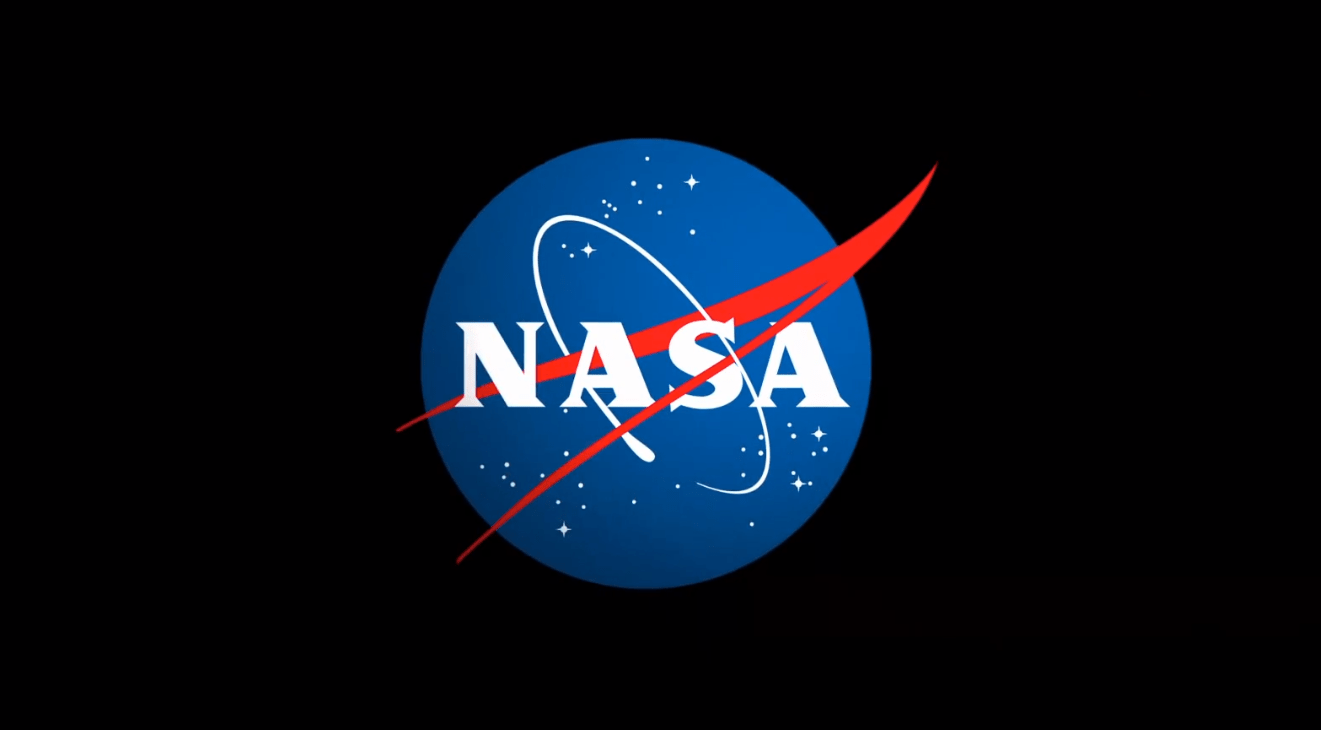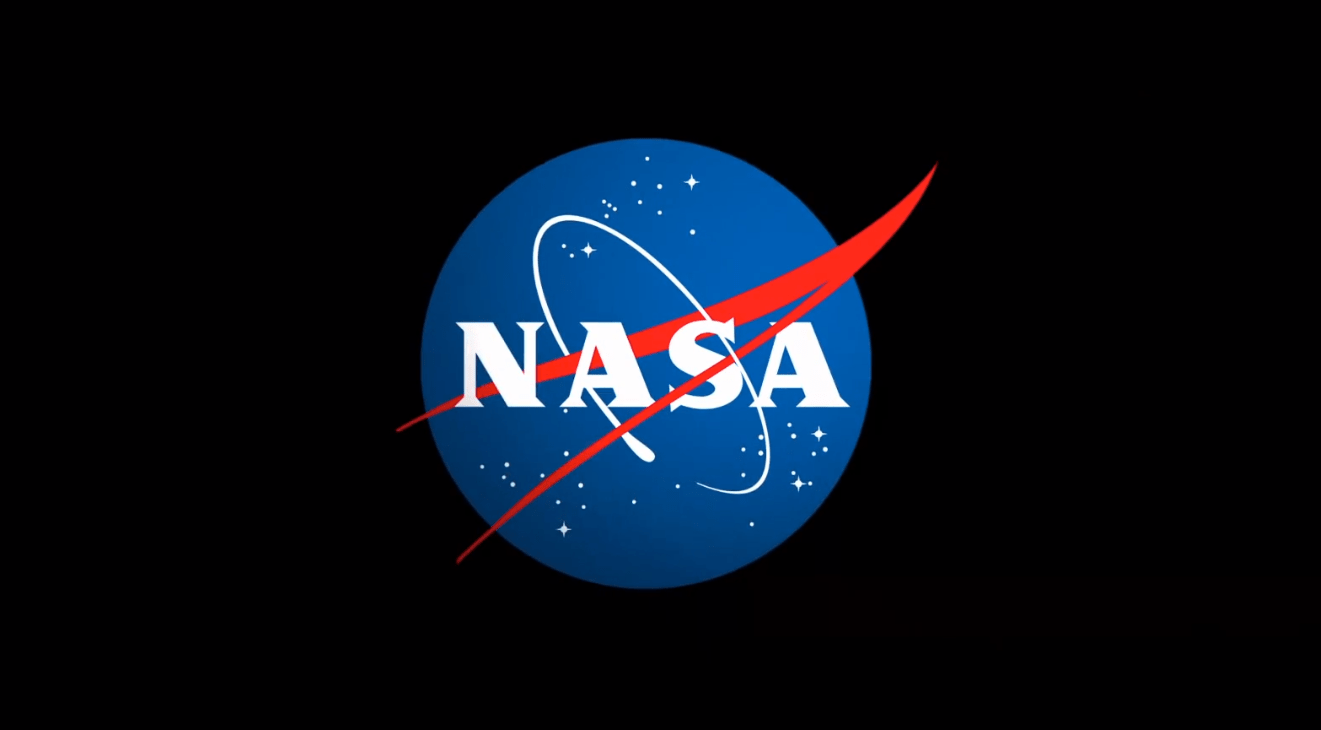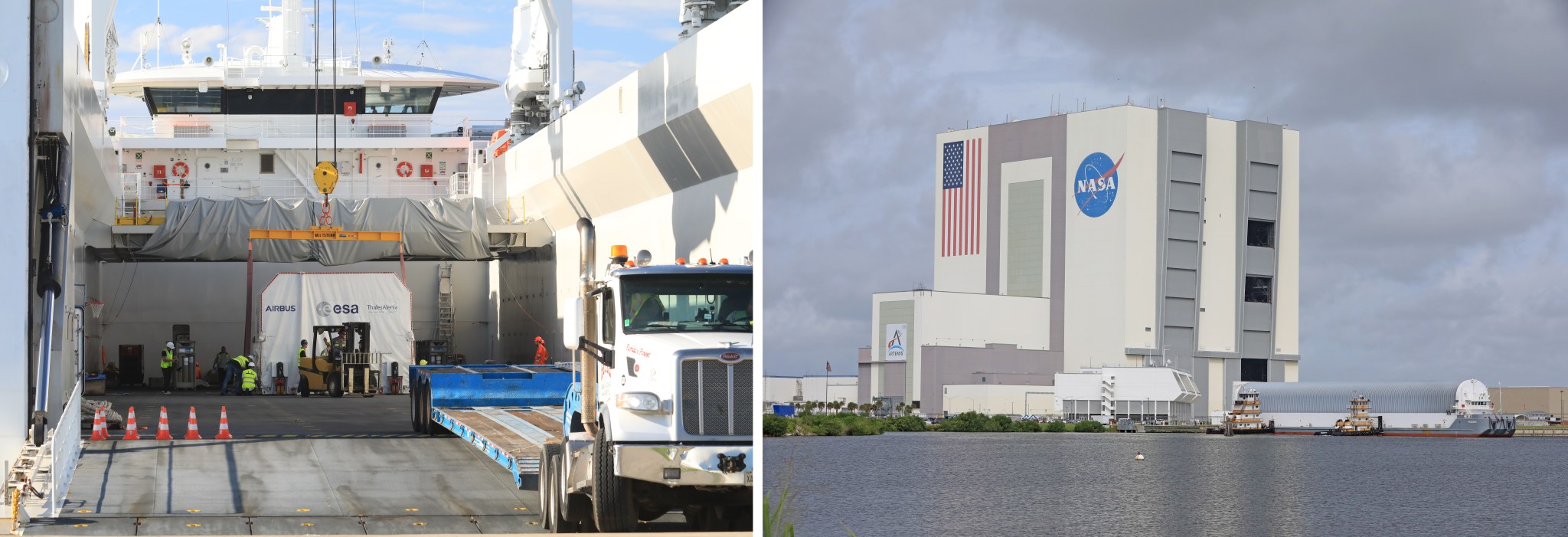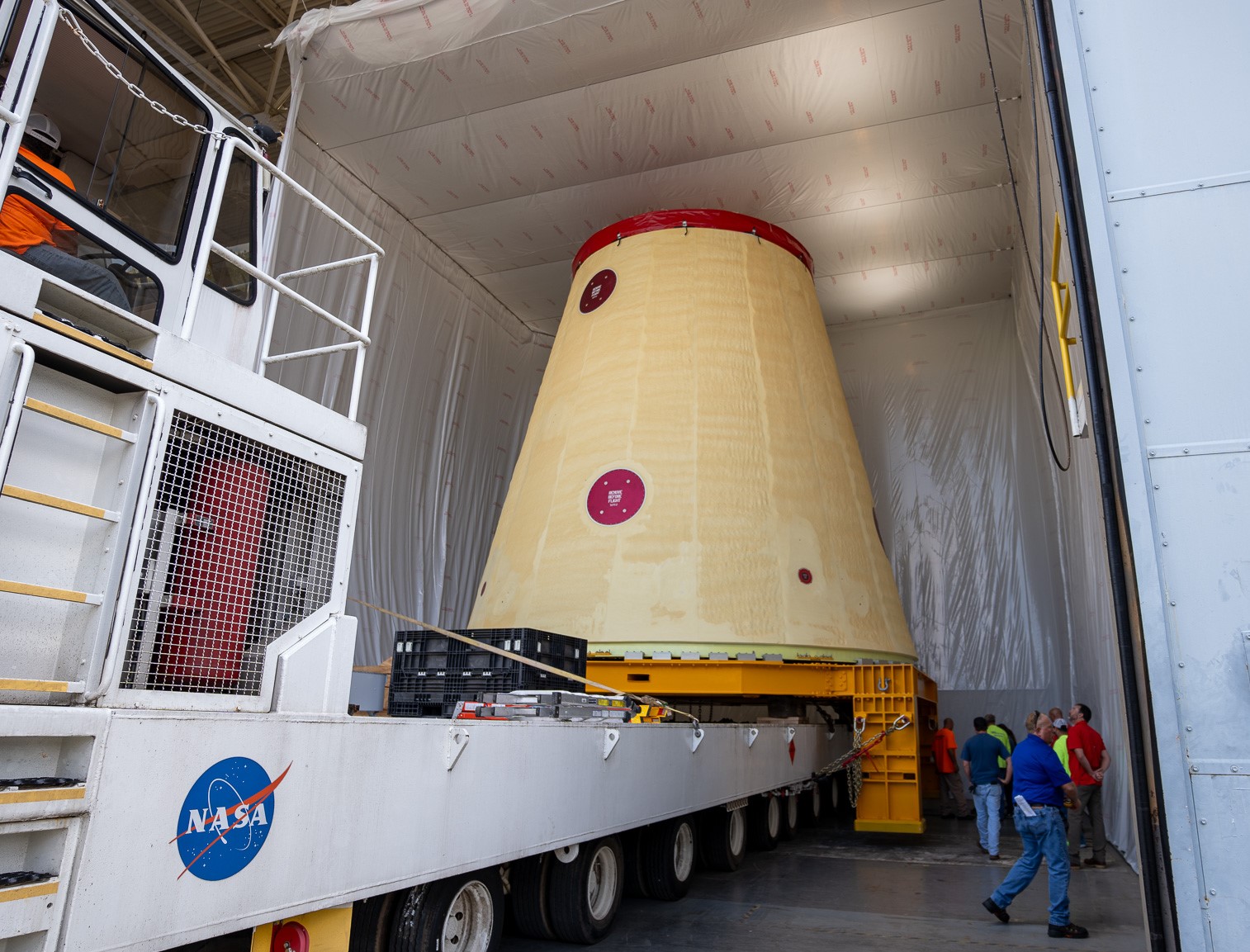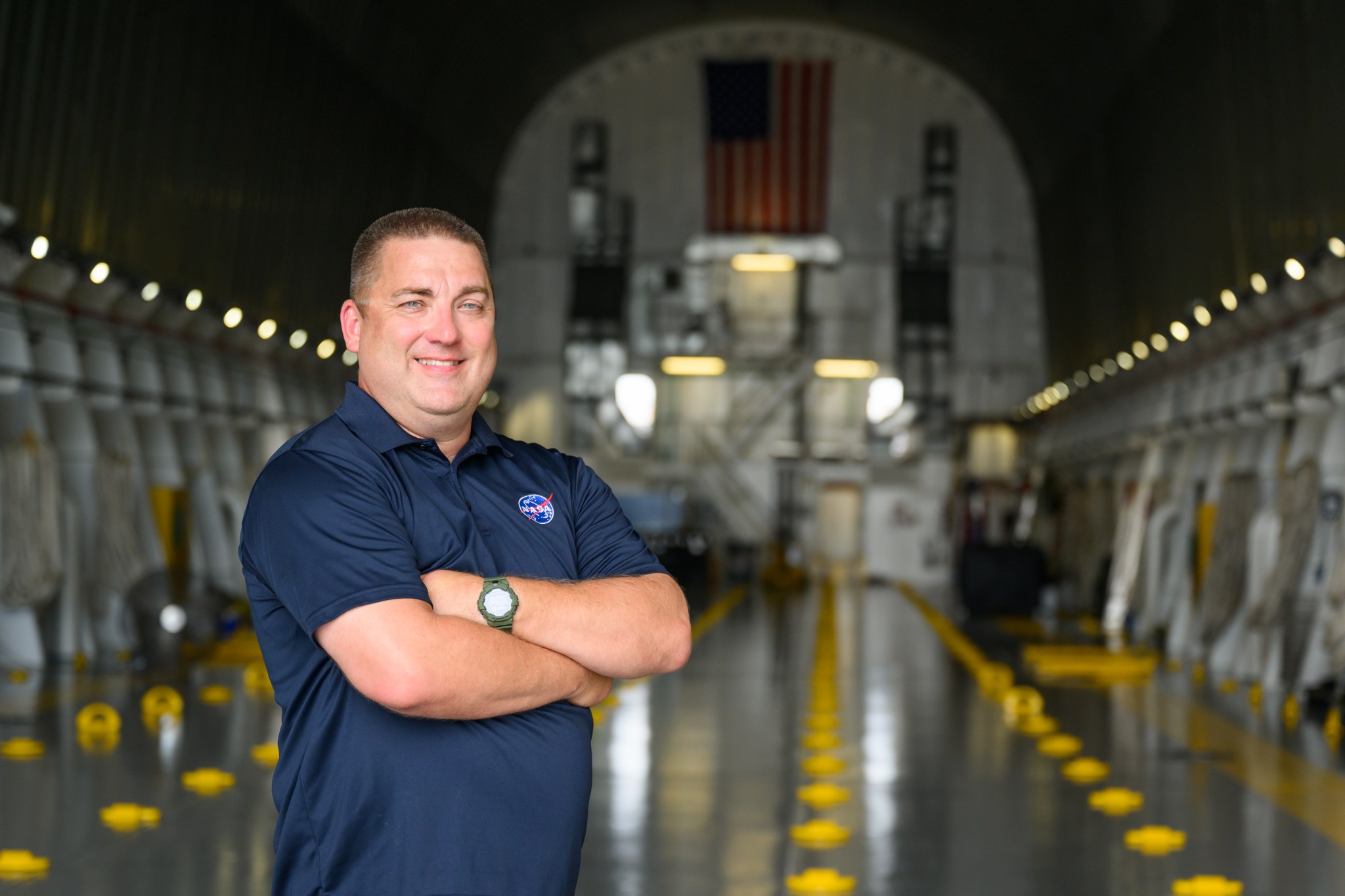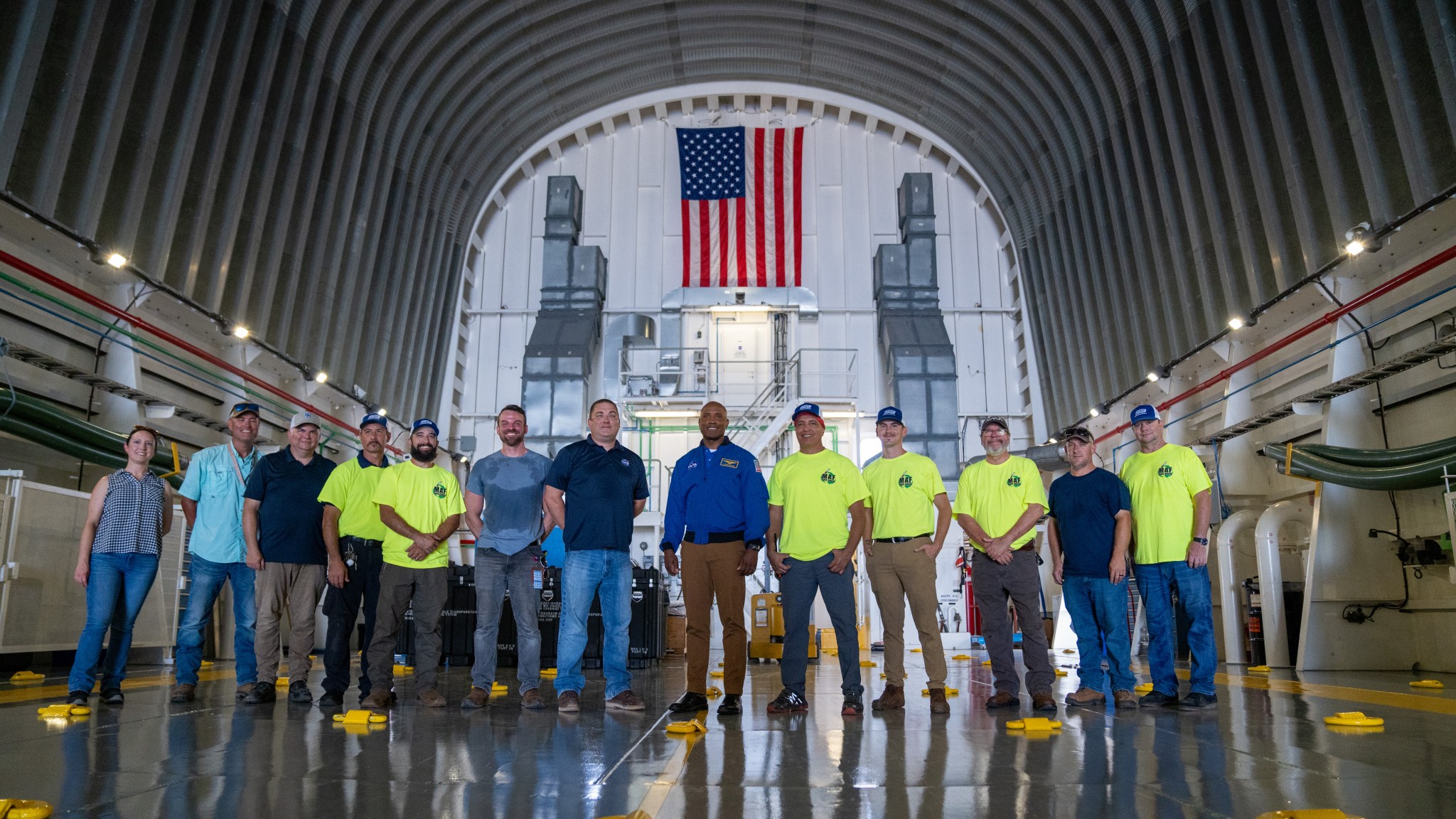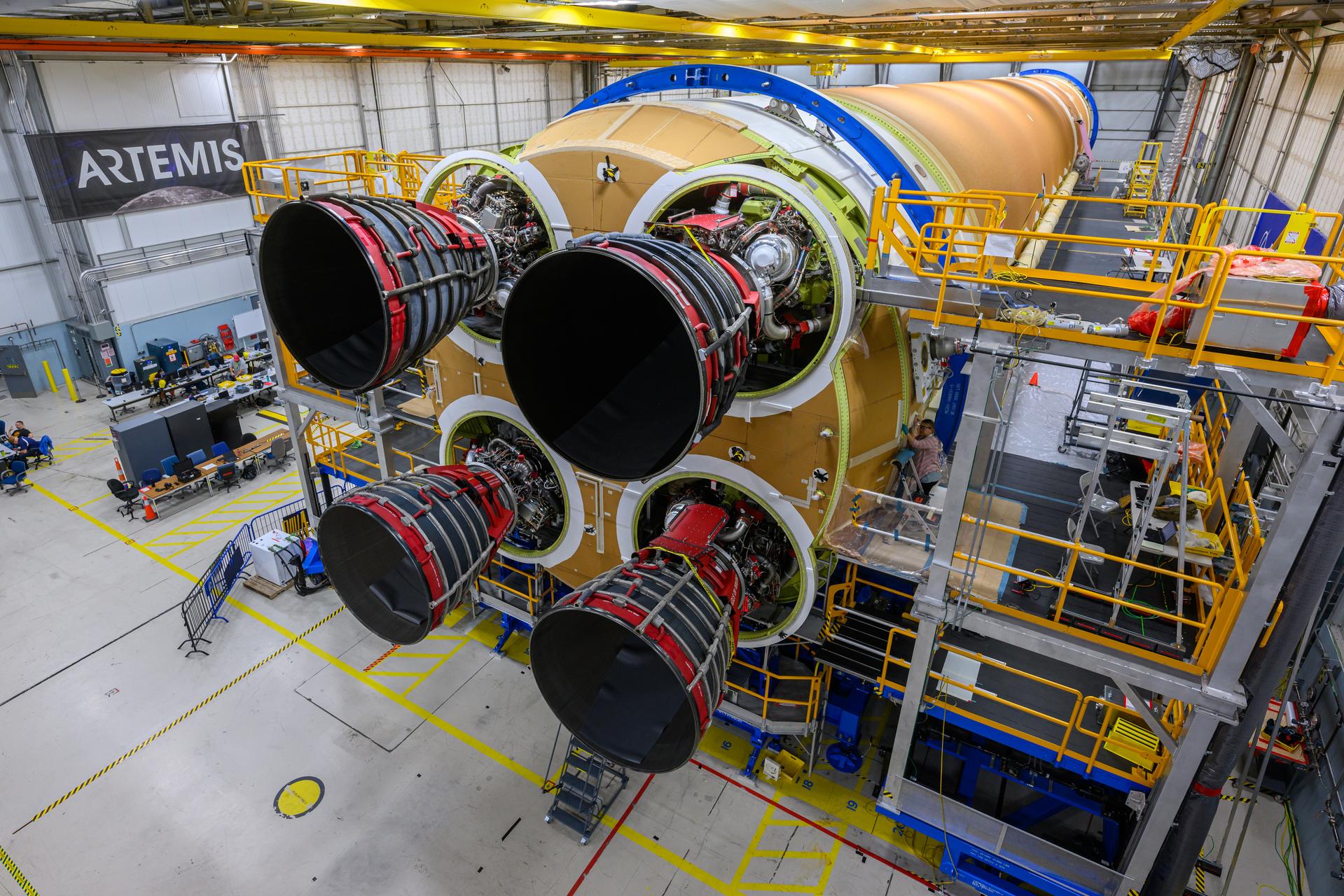NASA/Michael DeMocker Just after sunrise, the waning gibbous moon sets just behind a waving United States flag on March 19, 2025, in this image from NASA’s Michoud Assembly Facility in New Orleans. The waning gibbous moon phase comes after the full moon. As the Moon begins its journey back toward the Sun, the opposite side of the Moon now reflects the Moon’s light. The lighted side appears to shrink, but the Moon’s orbit is simply carrying it out of view from our perspective. The Moon also rises later and later…
Read MoreTag: Michoud Assembly Facility
NASA Awards Multi-Center Administrative Support Services Contract
Credit: NASA NASA has selected FedSync-BFS, LLC of Alexandria, Virginia, to provide administrative services for multiple NASA centers. The Multi-Center Administrative Support Services Contract is a firm-fixed-price and indefinite-delivery/indefinite-quantity contract with a value not to exceed $200 million during a five-year ordering period. The performance period begins April 1, 2025. Contracted work will take place in six NASA centers and facilities, including Johnson Space Center in Houston, Kennedy Space Center in Florida, Marshall Space Flight Center in Huntsville, Alabama, the Michoud Assembly Facility in New Orleans, Stennis Space Center near…
Read MoreNASA Awards Operations, Services, Maintenance, and Infrastructure Contract
Credit: NASA NASA has selected Nova Space Solutions, LLC of Anchorage, Alaska, to provide operations, services, maintenance, and infrastructure support for NASA’s Stennis Space Center near Bay St. Louis, Mississippi, and NASA’s Michoud Assembly Facility in New Orleans. The Combined Operations, Services, Maintenance, and Infrastructure Contract is a cost-plus-incentive-fee, firm-fixed-price, and indefinite-delivery/indefinite-quantity contract that has a value of approximately $822.7 million. The performance period begins July 1, 2025, and extends eight years and three months, with a 15-month base period, followed by a one-year option period and three two-year option…
Read MoreNew Hardware for Future Artemis Moon Missions Arrive at NASA Kennedy
On the left, the Canopee transport carrier containing the European Service Module for NASA’s Artemis III mission arrives at Port Canaveral in Florida, on Tuesday, Sept. 3, 2024, before completing the last leg of its journey to the agency’s Kennedy Space Center’s Neil A. Armstrong Operations and Checkout via truck. On the right, NASA’s Pegasus barge, carrying several pieces of hardware for Artemis II, III, and IV arrives at NASA Kennedy’s Launch Complex 39 turn basin wharf on Thursday, Sept. 5, 2024. Credit: NASA From across the Atlantic Ocean and…
Read MoreNASA Invites Media to Watch Artemis II Rocket Adapter Roll Out
Crews are preparing to move a key adapter for NASA’s Space Launch System rocket out of Marshall Space Flight Center’s Building 4708 to the agency’s Pegasus barge. The cone-shaped launch vehicle stage adapter connects the rocket’s core stage to the upper stage and helps protect the upper stage’s engine that will help propel the Artemis II mission around the Moon. Credits: Sam Lott/NASA To mark progress toward the first crewed flight test around the Moon in more than 50 years for the benefit of humanity, NASA will welcome media Wednesday,…
Read MoreI am Artemis: John Campbell
John Campbell, a logistics engineer at NASA’s Marshall Space Flight Center, stands on NASA’s Pegasus barge July 15. NASA How do you move NASA’s SLS (Space Launch System) rocket’s massive 212-foot-long core stage across the country? You do it with a 300-foot-long barge. However, NASA’s Pegasus barge isn’t just any barge. It’s a vessel with a history, and John Campbell, a logistics engineer for the agency based at NASA’s Marshall Space Flight Center in Huntsville, Alabama, is one of the few people who get to be a part of its…
Read MoreFrom One Crew to Another: Artemis II Astronauts Meet NASA Barge Crew
Members of the Artemis II crew met with the crew of NASA’s Pegasus barge prior to their departure to deliver the core stage of NASA’s SLS (Space Launch System) rocket to the Space Coast. NASA astronaut and pilot of the Artemis II mission Victor Glover met the crew July 15. From left to right: Ashley Marlar, Jamie Crews, Nick Owen, Jeffery Whitehead, Scott Ledet, Jason Dickerson, John Campbell, NASA astronaut Victor Glover, Farid Sayah, Kelton Hutchinson, Terry Fitzgerald, Bryan Jones, and Joe Robinson. NASA/Brandon Hancock NASA astronaut Reid Wiseman, commander,…
Read MoreNASA Barge Preparations Underway for Artemis II Rocket Stage Delivery
NASA/Eric Bordelon Team members are installing pedestals aboard NASA’s Pegasus barge to hold and secure the massive core stage of NASA’s SLS (Space Launch System) rocket, indicating NASA barge crews are nearly ready for its first delivery to support the Artemis II test flight around the Moon. The barge will ferry the core stage on a 900-mile journey from the agency’s Michoud Assembly Facility in New Orleans to its Kennedy Space Center in Florida. The Pegasus crew began installing the pedestals July 10.The barge, which previously was used to ferry…
Read MoreNASA’s SLS Rocket: Block 1 vs. Block 1B Configuration
NASA/Kevin O’Brien NASA’s SLS (Space Launch System) rocket in the Block 1B cargo configuration will launch for the first time beginning with Artemis IV. This upgraded and more powerful SLS rocket will enable SLS to send over 38 metric tons (83,700 lbs.) to the Moon, including NASA’s Orion spacecraft and its crew, along with heavy payloads for more ambitious missions to deep space. While every SLS rocket retains the core stage, booster, and RS-25 engine designs, the Block 1B features a more powerful exploration upper stage with four RL10 engines…
Read MoreNASA Invites Media to Rollout Event for Artemis II Moon Rocket Stage
The core stage is the backbone of the SLS (Space Launch System) rocket that will help power NASA’s Artemis II mission to send a crew of four astronauts around the Moon in 2025. Here, the core stage is currently behind scaffolding to allow work to continue at NASA’s Michoud Assembly Facility in New Orleans. The stage’s two massive propellant tanks hold a collective 733,000 gallons of liquid propellant to power the four RS-25 engines at its base. Following hardware acceptance reviews and final checkouts, the stage will be readied for…
Read More
